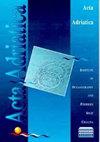Kvaliteta mora za kupanje na plažama u Kaštelima (Hrvatska) u razdoblju primjene Direktive o upravljanju kvalitetom vode za kupanje 2006/7/EC
IF 0.6
4区 生物学
Q3 MARINE & FRESHWATER BIOLOGY
引用次数: 0
Abstract
We analyzed and discussed bathing water quality at 11 official bathing sites in Kaštela (Croatia) in the period 2009-2022. The results showed spatial and temporal variations in quality. The worst bathing water quality was in the eastern part of the area, at beaches Torac, Kamp and Gojača. Levels of indicator microorganisms at identified sources of fecal pollution near these beaches indicate a significant load of fecal material to these areas. The observed decrease in annual fecal indicator bacteria exceedances, while not statistically significant, indicates a trend toward improvement in water quality. The number of sites with worse annual and final assessment showed a decreasing trend only since 2017 and 2020, respectively, which is not a ‘sufficient’ time period to draw a clear conclusion about the trend. The improvements are probably the result of intensive work in recent years to improve the sewage system in the area. In the annual and final assessment, bathing sites from Kaštela with ‘poor’ water quality accounted on average for more than 27% of all waters with ‘poor’ quality in Croatia. This implies that additional efforts are needed to eliminate the sources of fecal pollution in the area.卡斯特拉(克罗地亚)沿海游泳池在实施2006/7/EC水质管理指令期间的水质
我们分析并讨论了2009年至2022年期间Kaštela(克罗地亚)11个官方浴场的洗澡水质。结果显示了质量的空间和时间变化。洗澡水质最差的是该地区东部的托拉克、坎普和戈贾查海滩。这些海滩附近已确定的粪便污染源的指示微生物水平表明,这些地区有大量粪便物质。观察到的年度粪便指标细菌超标量的减少,虽然在统计上不显著,但表明水质有改善的趋势。仅自2017年和2020年以来,年度和最终评估较差的网站数量才分别呈下降趋势,这不是一个“足够”的时间段来对这一趋势得出明确结论。这些改善可能是近年来为改善该地区的污水系统而进行的密集工作的结果。在年度和最终评估中,Kaštela水质“差”的浴场平均占克罗地亚所有“差”水域的27%以上。这意味着需要进一步努力消除该地区的粪便污染源。
本文章由计算机程序翻译,如有差异,请以英文原文为准。
求助全文
约1分钟内获得全文
求助全文
来源期刊

Acta Adriatica
生物-海洋与淡水生物学
CiteScore
1.60
自引率
11.10%
发文量
13
审稿时长
>12 weeks
期刊介绍:
Journal "Acta Adriatica" is an Open Access journal. Users are allowed to read, download, copy, redistribute, print, search and link to material, and alter, transform, or build upon the material, or use them for any other lawful purpose as long as they attribute the source in an appropriate manner according to the CC BY licence.
 求助内容:
求助内容: 应助结果提醒方式:
应助结果提醒方式:


